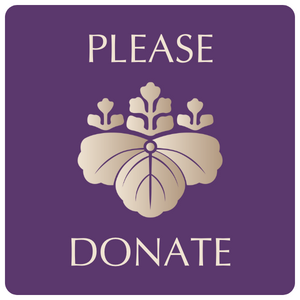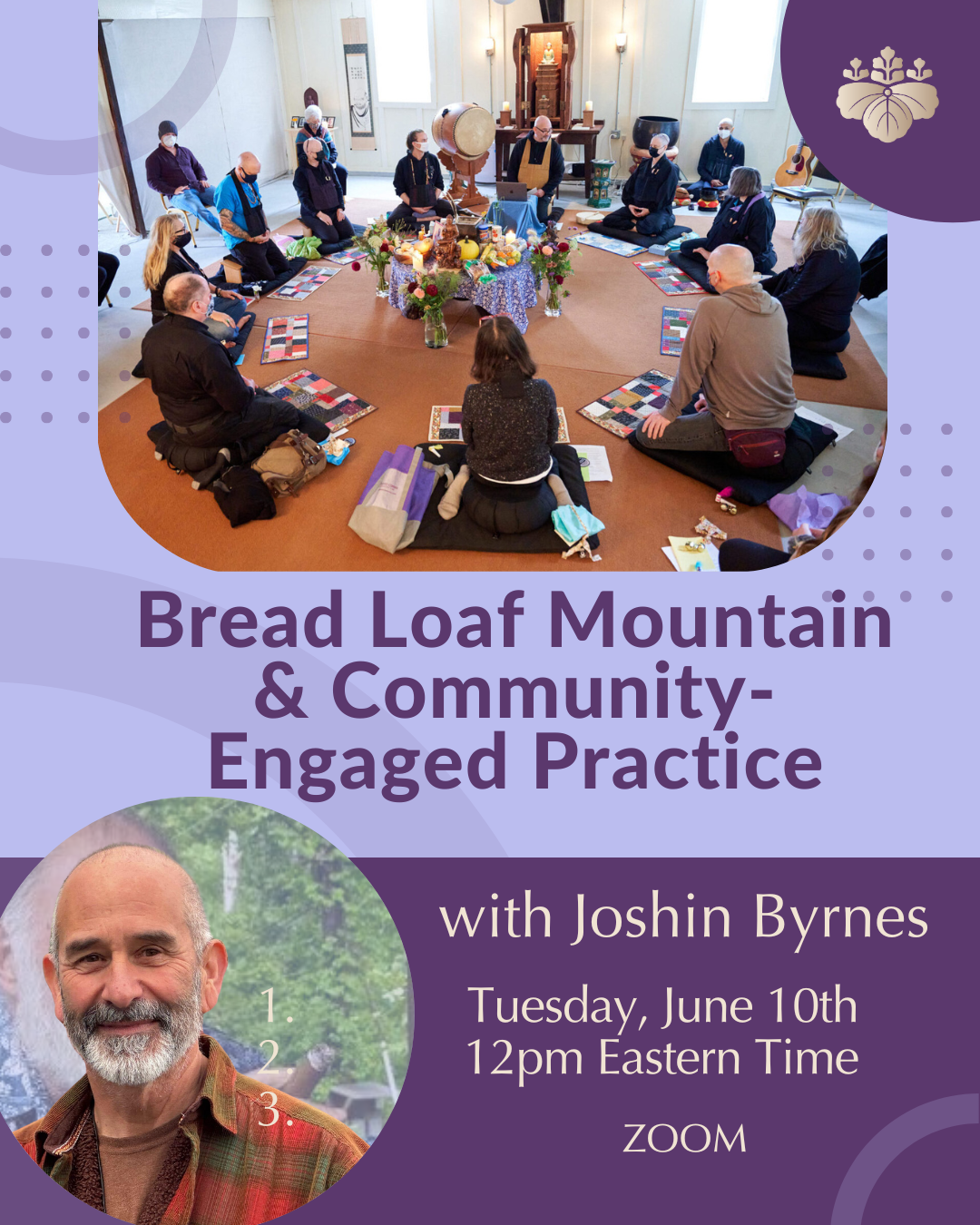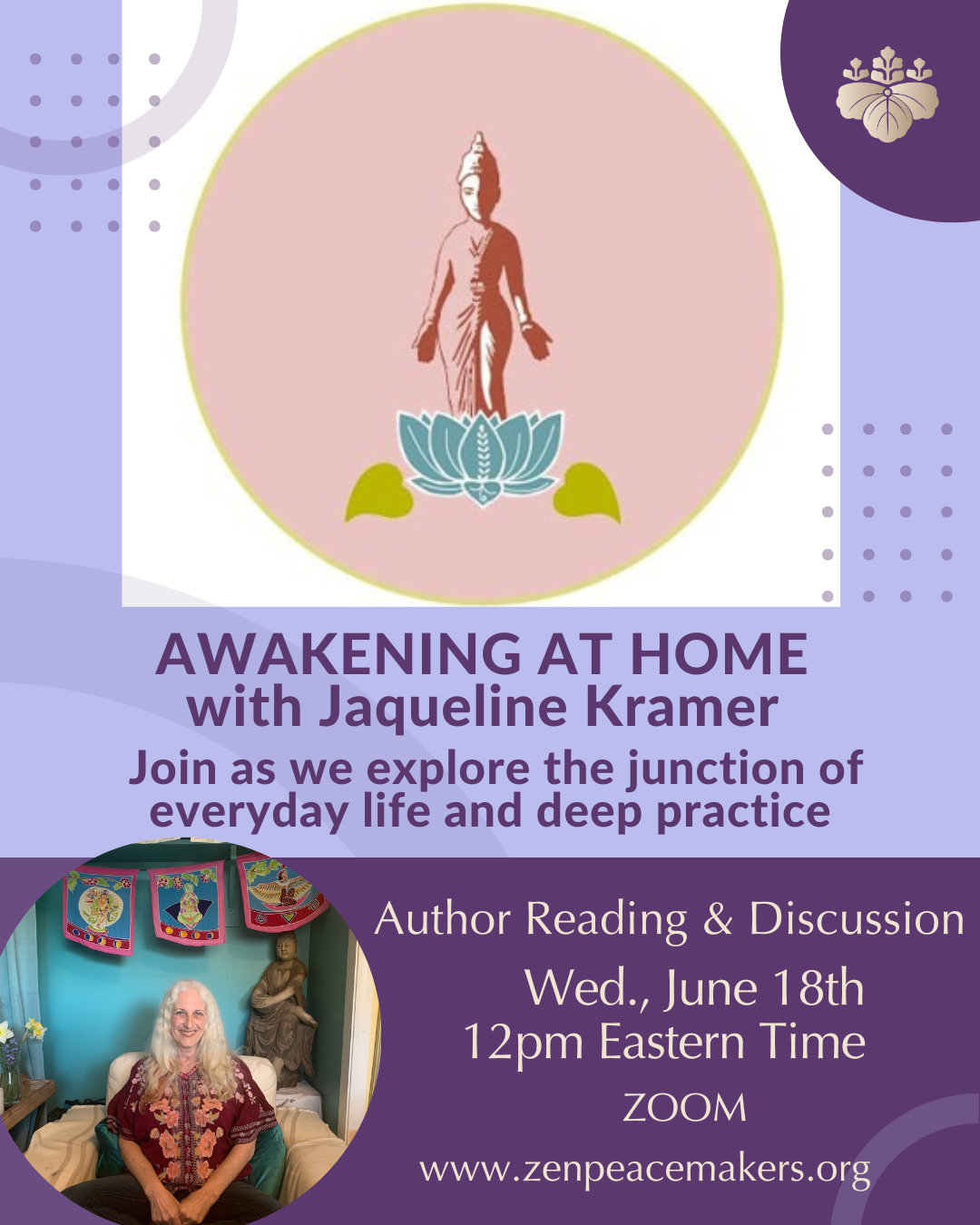Bernie’s Training: Social Engagement
By Roshi Bernie Glassman
Photo by Peter Cunningham of Bernie, Sandra Jishu Holmes and the Greyston Builders, local Yonkers construction crew started by Bernie, at the
first rehab project (2.8 million dollars) for homeless families (19 units of housing) and a child care center in Yonkers, NY USA. Greyston has built over 300 units of housing by 2015.
(Continued from Bernie’s Training: In The Beginning )
This is my second twenty years in Zen—sort of the second twenty. I will start around 1976. That’s about forty years ago. I had just received dharma transmission from my teacher.
But more important in ’76, I had an experience which was very important in my life. It was an experience of feeling all of the hungry spirits, or ghosts in the universe—all suffering, as we all do.
And they were suffering for different things. Some were suffering because they didn’t have enough enlightenment. Some were suffering because they didn’t have enough food. Some were suffering because they didn’t have enough love. Some were suffering because they didn’t have enough fame. Some were suffering because they didn’t have enough housing. Some were suffering because they had bad teeth—like me, all kinds of sufferings.
Out of that, in a car ride to work, a vision of all of these hungry spirits popped up. And immediately it also popped up, that these are all aspects of me. Just remember, my experience was that everything is me. All of these hungry aspects of myself popped up. And an action came out of that, which was a vow to serve, to feed—it was really more to feed all of these hungry spirits.
So until then, I had decided that my work was going to be in the meditation hall, and in a temple. I had quit for the fourth and last time my job at McDonnell Douglas. And I was now a full time Zen teacher. And I was going to work only in the meditation hall, and work only with people who came to our Zendo, and wanted to be trained.
But now I made this vow to work with all these hungry spirits. So that meant I had to change the venue, change the place I worked. And now it was still to work in the meditation hall, but also to work in all of life, all of society.
And then the big question arose to me; what would be useful to help people in these different spheres of life—like business people, and entertainment people, and social action people, and all these people? What would be good, what we call upayas, expedient means, or ways of helping people to experience the oneness of life in those spheres? All of my training had been in the meditation hall. I was trained in how to run Sesshins, how to use the kyosaku properly, how to wear my robes properly. I had been trained in koan systems. I had done two different koan systems. So that was a lot of koans—around six/seven hundred koans. I was trained in how to teach people to do meditation, in different ways—with breathing, with Shikantaza, different styles. And I also had been interested in interfaith work, so I had been trained in Christian meditation, in Jewish meditation. Those are my trainings. But I didn’t think that would work in the business world.
So this was my new kind of study—what would be the method? Also, I have to say that this may have been influenced by the fact that for a number of years before ’76—well, for a long time—in our Zen Center of Los Angeles, we had morning liturgy, afternoon liturgy, and evening liturgy. And it’s sort of prescribed what that liturgy is in the Soto sect. There’s some choices, some variety, but the evening service that we did was called Kan Ro Mon. And we did it all in Japanese (it’s really Chinese—but Japanese pronunciations). And somehow, that service really affected me. And I knew nothing about what it was about, because I was just chanting these Japanese words. It turns out that that service—and I sort of start finding this out after the experience of the hungry spirits—that service is about feeding the hungry spirits, in the five Buddha fields.
OK, so I had that experience in ’76, and by ’79 I was planning to leave the Zen Center of Los Angeles and move back to my original home, which was New York. And I started to meet with people in the New York area to create a board, and to plan where we would start, and how it would be. And I talked to them about the fact—when I came back to New York—I wanted to build a society, an actual society in the city. A little bit like the old cathedrals were, where they were a whole city. And the community we built, I wanted to build it via the five Buddha families. And that meant that we were going to be involved in social action, and business, and all these different things.
And most of the people just laughed at me, and said, “You’re crazy, Bernie. What we want is for you to come here, and set up a Zendo. And that’s why you’re coming here. We want to sit with you, and study koans, and do that.” I said, “Well, that may be what you want, but I’m coming here to do that.” And they said, “Aaach, you’re not. We still want you to come, and we don’t believe you.” You know, “this won’t happen.” That’s what they said to me, these people before I came. I have the minutes of those meetings.
So anyway, we moved to New York, and I started to build this mandala. First I built a spiritual base, and then the study base, and then the business base to give us resources, and then the social action base. And all along, I was looking how does this work in terms of relationship? How do we keep it so it stays a full mandala? At that time, I think I was the only one involved in that thinking. Everybody else was pretty much it was a regular Zendo, but just for a while. And then, they start shifting, and many people left. People would leave because I wasn’t doing what they wanted. It was a little bit crazy. But we were doing a real life plan.
So, for me what was happening while we were doing our meditations, and koan study, and different Zen studies, and teaching people that, at the same time we were trying to develop a work practice. What do you do, in terms of work, that would help the people who are working experience the unity of life? That was my question. So my question, as we started to work in these different fields was not just how do we do a good job? Or in social action, how do we help? My question was how do we do it in a way that helps the people that are doing the work, and the people that are being served—how do we do it in a way that helps both of them experience the oneness of life? That was always my question. And that question has never stopped. And it’s at the forefront of what I do.
(to be continued soon)




Because the admin of this website is working, no
doubt very quickly it will be famous, due to its quality contents.
Fantastic blog! Do you have any tips and hints for aspiring writers?
I’m planning to start my own blog soon but I’m a little lost on everything.
Would you recommend starting with a free platform like WordPress or go for a paid option? There are so many
options out there that I’m completely confused ..
Any tips? Cheers!
I look forward to reading more. I support Greyston and follow Buddhist practices.